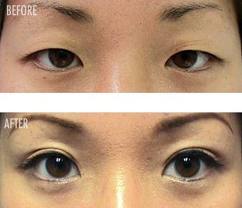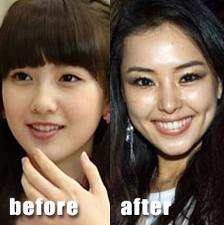It’s early morning. As the sun creeps over the horizon I am dressed and walking as people around me sleep. The eerie stillness of dawn is broken by a 50-year-old woman clad in bright pink jogging around the nearby playground. As she makes her approach to the swings, feeling eyes upon her, she turns to stare at me. Ignoring the glare I walk onwards to the bus stop.
Koreans care for their image. Walking down a high street you will see brands plastered over the citizens who have opted to buy luxury brands with their hard-earned cash. 
As a westerner it is an unwritten requirement that you fulfil a certain English-speaker stereotype. This manifestation must preferably have white skin, be born in a country with English as the native tongue and ideally have blonde hair and blue eyes. In a similar fashion, Koreans also have certain physical features that are appreciated and sought after by their compatriots.
Samsung (Group) is accountable for about one fifth of Korea’s exports. The company itself was founded in 1938 by Lee Byung-Chull and he built his empire firmly on three main factors: market, management and people. He was a pioneer in hiring staff, choosing a psychologist as his consultant rather than a business specialist. It was also his belief that the human face was an open book to that person’s life and personality. He believed this so strongly that only those prospective employees with certain defining facial features would be hired. This unusual method of selection has become ingrained into Samsung’s recruitment process. Although perhaps not as strictly applied, it would appear that this reliance on looks is part of Korean culture.
When applying for a job in Korea, native applicants must provide everything from their social status to a recent photograph. Date of birth, experience, qualifications and references are also necessary. However the strangest piece of information required is details of the applicant’s parents. Curriculum vitae must include your parents’ social and employment status and failure to do so will void your application. And if your parents were unsuccessful in life, regardless of how many qualifications you have, you may well be discriminated against.

But there’s much more to be taken into consideration if you are fortunate enough to get to the interview stage at Samsung. At this mighty company you will be met by the interviewers and a ‘face reader’. The ‘reader’ is there to provide ‘expert’ opinion on the applicant’s face. Such features as the eyebrows and how far apart they are, the shape of the nose and the size of the nostrils, the regularity of the teeth and even the plumpness of the lips. Lacking the prescribed aesthetics, you are likely to be shunned.
Plastic surgeons have capitalized on this and the market has expanded, with many Koreans making the decision to go under the knife in an attempt to change their appearance as a means of upgrading themselves in the recruitment process.
It is common practice for women to have their cheekbones raised to finish up with a look closely resembling a triangle. Also, a more widespread operation is to insert a crease on the eyelids to give the impression of larger and shapelier eyes. This kind of surgery is well-established across Asia – as it estimated that about 50% of Asians are born with a ‘single eyelid’ (whereas most Caucasians are born with a ‘double eyelid’).
As with any surgery, there can be complications. For instance, a faulty operation could disfigure the face by leaving unsightly scars or actually deform the facial structure. However, the risk appears to be the same as in any developed nation. It is just that the deemed necessity to go to such extreme measure is so much more generally accepted, and expected, than in the West.
So does this drastic approach work? Yes, sadly it does. Plastic surgery is changing the rules of the game and if you can afford a procedure then it can give your career a well-needed boost.
Soon we shall see a people with a crisis of identity – a people with only one.
© John Brownlie 2011


Recent comments